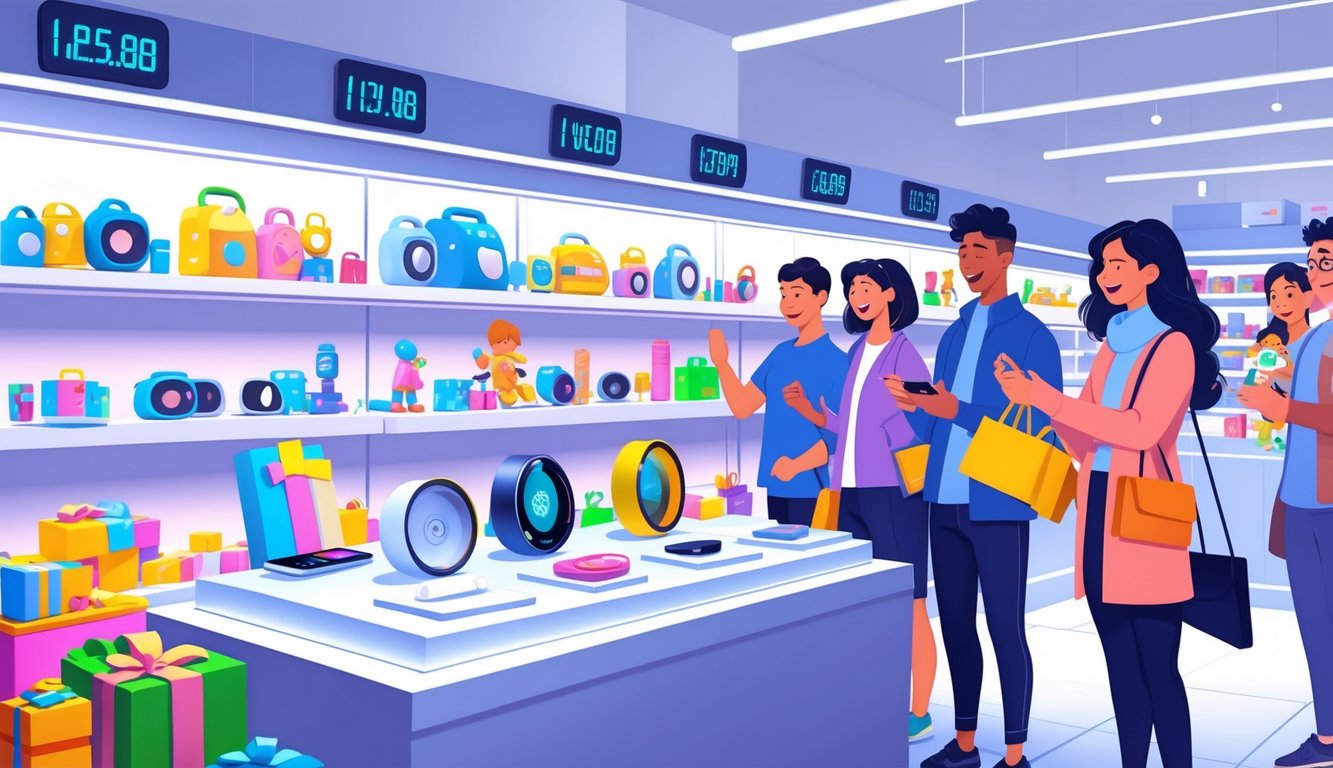
The Role of Connectivity and Smart Features

When did “toy” start meaning “Bluetooth and a firmware update”? I see parents huddled by outlets, hunting for USB-C chargers like it’s a scavenger hunt, because someone’s always hoarding the only working cable. Stuff I thought was pointless—now the fridge, the phone, even the plug, all want to “help” manage my life.
Seamless Integration with Other Devices
Some days, it’s just a mess of cords (why are all mine six feet long?), but then my phone pings me that the coffee’s ready, and the smart outlet kicks on the fan because the kid’s room gets muggy. Ignoring notifications is impossible now—Alexa, Google, smart TVs, even my watch, all want to “talk” to each other. Occasionally, they actually succeed.
But here’s the weird part—everything wants a login, everything wants permissions. Who keeps track? Supposedly, USB-C charging and cross-device syncing are the big selling points now (NY Times says so), but honestly, it just feels like more stuff to troubleshoot. My friend literally synced her smart plug to her office app to track energy use (don’t ask me why). The wildest part: connected gadgets are outselling old-school toys, just because people expect everything to update itself now.
Smart Outlets and Plugs Simplifying Daily Routines
Flipping switches? Nope, I just set routines. Lights dim, humidifiers hum, and my ancient coffee maker got a second life with a TP-Link Kasa plug (Wirecutter is obsessed with it). Downside: coffee started at 3 a.m. once because my “weekday” routine doesn’t know holidays exist. Who programs these things?
Smart outlets track energy use—the Kasa EP25 even shows stats in the app, which Strategist called a “must-have” for gadget nerds. After the setup circus (accounts, updates, permissions), these plugs just work and demand way less attention than any “simple” toy. That’s probably why I keep buying tech gifts instead of Legos. Fewer lost pieces, I guess.
The Influence of Streaming and Entertainment Culture
I walk past the toy aisle and it’s just—empty. Nobody under 12 even looks at action figures now. Did TikTok kill G.I. Joe? Maybe. Everything’s a rectangle now—Kindle Scribes, digital photo frames—flying off shelves because apparently, only things that stream matter. My cousin’s eight-year-old asked for a Bluetooth speaker for her birthday. Legos are out, I guess.
Streaming Services Fueling Demand
Kids watch, what, 3.2 hours of content a day? (Nielsen says so, and I believe it, based on every dinner devolving into YouTube debates.) Adults aren’t innocent either—everyone hoards streaming subscriptions to keep up with whatever’s trending. I know parents who bought extra speakers just because their kid went on a Frozen karaoke spree.
Live streaming is a whole other beast—parents tipping gamers instead of buying dolls? That’s a thing now. Peer gifting on streams is an actual revenue stream, and yes, I paid $2 to see my username pop up on a Minecraft stream. Not proud. Saturday morning cartoons never required a remote to survive 12 hours of Paw Patrol.
Portable Entertainment Tech
Bluetooth speakers are on every holiday list for tweens, even though half of them can’t spell “subwoofer.” Portable entertainment sells because kids want to control their own playlist, not just watch TV. So, Kindle Scribes in backpacks, along with snacks and existential dread.
Digital photo frames—my aunt updates hers more than she texts me. Priorities. Friends keep asking for the “best” Bluetooth speaker for backyard Roblox parties—my advice: make sure it’s waterproof. Streaming platforms turned device collecting into a weird status game, and honestly, adults are just as bad. Portable audio gear gets hyped like 90s toys. Welcome to the era of content everywhere, on any device, or none, if you left your charger on the bus.
Sustainability and Practical Tech Gifts
The gifts I actually use? Not plastic toys. It’s all about “green” gadgets and chargers that don’t break after two weeks. Suddenly, every trip or blackout is just less stressful—or at least, less annoying—because I’m not hunting for AA batteries.
Eco-Friendly Innovations
Solar panels on a Bluetooth speaker—barely news, but apparently it “reduces clutter” (my coworker’s words, not mine). My neighbor claims her solar charger saved the family during a blackout. E-waste is a nightmare—53.6 million metric tons, says the UN—but companies keep pushing recycled headphones, compostable phone cases, stuff that’s supposed to last longer than a fidget spinner.
I’m always torn between “don’t buy more cables” and “does this count as recycling?” Eco tech—from countertop composters to USB-C everything—just keeps popping up. Why did I ever buy so many plastic toys? A sustainable LARQ bottle or solar power bank is right there—practical, useful, and less likely to break your toe at 2 a.m.
Battery Life and Charging Solutions
Portable chargers: not cute, not fun, but always in my bag. Every gift guide sneaks in a USB-C charger, probably because running out of battery feels like a disaster now. “Eco” models promise 72+ hours of juice—nobody believes it until the kid’s tablet survives a road trip.
Batteries always die at the worst time—like, right before a meeting. At least some new devices, especially the sustainable ones, let you swap batteries instead of buying new stuff every six months (which, let’s be real, is why we’re drowning in e-waste). A power bank with USB-C fast charging means fewer junk cables, less trash, and one less excuse to pay for overpriced airport chargers—though the coffee is probably older than my phone.